BJ to UB – a slow train out of China and into Mongolia
Tags: 1, Family, Observations, Transport, Travel, Tag IndexThis will (I hope!) rate as the most arduous bit of travelling we will do.
Not that the train was uncomfortable, far from it, but we were on the train for 30 hrs and then rounded off the trip by travelling by bus to a Mongolian Ger. This was one of the felt ‘round houses’ that traditionally, nomadic Mongolian and Russian shepherds lived in. This was not a ‘Tourist’ version: this was the real thing, and we spent two fascinating days living with them. But I am getting ahead of myself.
The train journey out of the mega-city of Beijing started by slowly discarding the high-rises and super-buildings and finally getting into the countryside.


Immediately the train started a long gradual climb through incredibly rugged terrain: diving in and out of tunnels for literally hours, the countryside becoming more and more barren and inhospitable
_ eventually catching another glimpse of the Great Wall – still snaking its way North.
The terrain reminded me of scenes of the Afghan Border. A great part of the time diving through tunnels that cut through the mountainous region. Across ravines more rail tracks could be seen also diving through more tunnels. Incredibly difficult terrain. Dry dry dry. This was countryside just emerging from a harsh winter – months of sub-zero temperatures and no rain.
Climbed slowly to over 5000ft Our popping ears – and Rob’s GPS confirmed that we were indeed getting high up. Air very dry and cold. Reminded me of flying in an aircraft. Gradually the rugged mountains gave way to more rolling hill country – still brown & dry. Not a blade of grass to be seen, not a tree in sight.
Later seen across a vast flat plain (reminded me of Klondike Corner in the SI but 10 times bigger: two huge goods trains going in opposite directions. Each with 2 huge engines coupled together and the trains looked up to 1/2 km long.
Iced-over ponds and semi-frozen rivers dotted the scenery.
Passing us in opposite direction every 10 mins or less, another goods train! In what seems the middle of a wilderness, signs of intense economic activity.
In ‘the middle of nowhere’ vast viaduct structures to carry rail & road above the countryside. Why? Every where evidence of vast infrastructure development, seemingly well ahead of current needs.
A sudden pollution-producing building block set in the middle of nothing. What purpose?
At about 8.15pm we reached the China/Mongolia border and this started the the longest and most arduous border crossing I have ever endured. The whole process lasted from 8.15pm to 2.00am. It was impossible to get any sleep during that time. Why such a long process? Well the reason is that China and Mongolia run there own rail gauges, and they differ by about 120mm! The most logical answer to this dilemma is that everybody disembarks and gets on another train for the Mongolian sector. But no! These guys have a much more ingenious way of dealing with the problem – change the bogies under the carriages! Hard to believe but that it what they did/do. Given about 16 carriages, each with 2 sets of massive 4-wheel bogy sets, this could never be a quick job!
A huge workshop,

well over 100 m long equipped with many service station type hydraulic lifting stations and with twin gauge tracks is set off to one side of the line. By dint of endless shunting backwards and forwards a few carriages at a time are shuffled into position in the workshop A carriage (complete with passengers if you elected to stay on board) is lifted bodily off the bogy sets which are then rolled away. New-gauge bogies are then rolled in place under the raised carriage which is the lowered onto them.
A smooth operation except for the shuffling of carriages through the workshop. This took 2-3 hours with endless hooting signals from the train driver accompanied by bone-shaking crashes as the rain shuffles back and forth endlessly. It seemed part of the Safety inspection procedures to jarringly push and then pull the newly-mounted carriages. The racket was hideous, bang, crash, toot, toot, on and on for several hours. Of course the gangs performing this re-building of the train are all working in about 0C temperature!
Of course, while carriages disconnected all carriage heating is off. Prob 1C outside so train cools off. Also all the toilets are locked while the train under service. Cold night air and no toilets not a good combination! There were a lot of anxious faces during this time.
Then came Customs and Immigration officers, taking passports, checking forms, handing out more forms, passing passports back, collecting passports again and generally making a nuisance of themselves. Finally finished at 2.0am.
We awoke a few brief hours later to a barren landscape of Mongolian Steppe. Actually the Gobi desert! Looks like Canterbury plains after 3 yr drought. Brown undulating plains as far as the eye can see. Apparently Winter is the dry season. Occasional cattle nibbling at what appears to be pure desert! Air is crackling dry. Throat dry, lining of nose dry and tingling, throat feels parched all time.
To pass the time away I introduced some of the kids to Shanghai (the card game) and we spent a few fun hours at it. Some friends of mine will be most pleased to hear that the disease is spreading!
Hour upon hour of flat brown plains Not a tree in sight in any direction –it must be piteously hot in the summer. A desolate and barren outlook.
Finally we made a slow arrival at a quiet Ulaan Bataar station. Not the mad scramble to be first that has been the norm throughout South East Asia. Instead, a new cultural style that we will soon become accustomed to: a steady purposeful progress of burley people who happily shoulder you out of the way as they make their way.

Once on the platform we realise we a have over an hour to wait before our ‘Couch-surfing’ host is due to meet us. So Rob & I take off to look for money and place where we will be able to buy tickets, while rest waited patiently for our contact to arrive.
This is a fairly ram-shackle city. It reminded me of Yangon: the same crumbling footpaths and roads, broken facilities, rubbish everywhere, lack of order and general air of decay. There are the big modern buildings dotted around but these are few and far between.
When we returned, we found the party talking to a chap on his bike, with a young boy hanging around. As I approached I said “no sign of your contact yet”? thinking this unprepossessing duo were not likely to be our hosts. How wrong can you be! Our host had just ducked away from work with his son to meet us. His son, (all of 9 years old) it transpires, will take us to his Ger on ‘his’ bus. He pointed across the road to where I could see a number of mini-buses parked. Things are looking up I thought. How wrong can you be? Again! ‘His’ bus turns out to be the no.20 which his family always catch! Fortunately we are at the start of the bus route and so we get ourselves and our packs on quite easily. The journey takes about 30 mins. The bus stops at every stop. At every stop more people get on, no-one seems to be getting off. Half way into our journey it is standing room only. Still the bus stops. No-one is refused entry. More people get on. Again the the bus stops. More people get on. This is just impossible. Squashed next to me is a lady with a pair of crutches and one leg. Someone has grudgingly given her a seat. She is being pressed steadily into my lap. Hanging above us is another woman going greener by the minute and swaying dangerously close to a faint. I shove open the sliding window and encourage her to sit on the top of my (soft) suitcase. Somehow she manages to collapse onto the case. The bus stops, more people get in. This is totally unreal! The woman in front angrily slams the window shut again, but some colour has returned to the cheeks of the green lady. Mercifully, she will not throw up all over me.
Finally we reach our stop. Through the hubbub I hear a muffled shout from Rob, buried somewhere in the crowd, and we fight our way off the bus. Where are we? The district has been getting steadily more run down and scruffy, and here we are, on the dusty side of the road with seemingly nowhere inviting to go!
The boy gives us an encouraging smile and we head off, up the side of a dusty gully. The bottom of the gully is evidently the site of the local rubbish dump, but we trudge wearily up the side, I dragging my trusty wheeled suitcase through the dust and rocks.
Further on up we struggle (I am feeling just about done-for!) when the boy swings open a narrow ‘door’ to an alleyway.
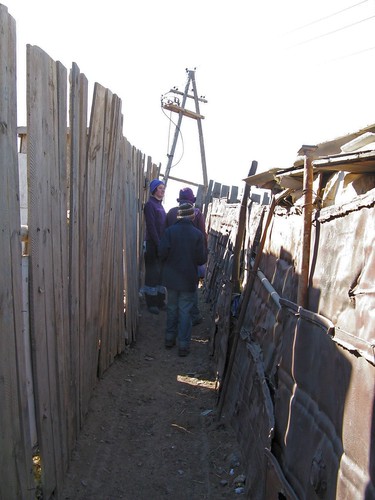
We squeeze through this and find a barren rocky area in front of us, with a couple of Gers tucked in the corners. This is to be home for the next couple of nights.

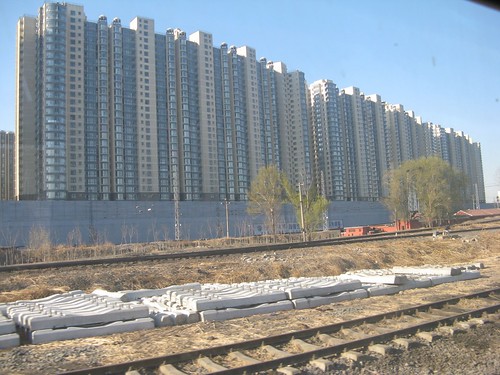
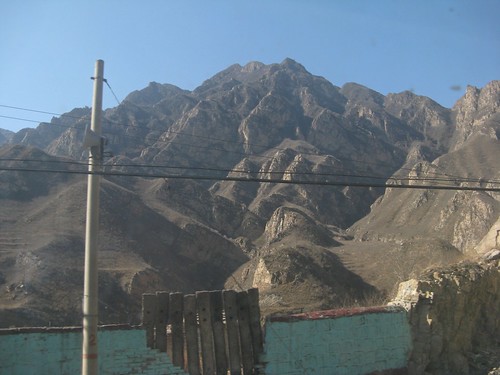

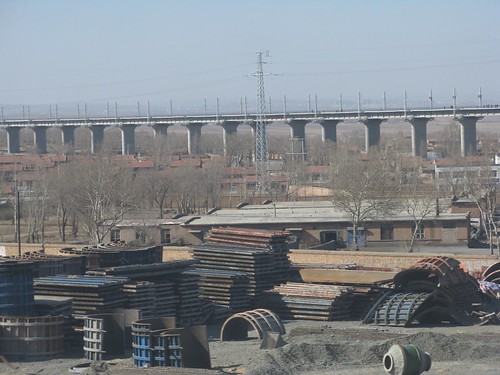
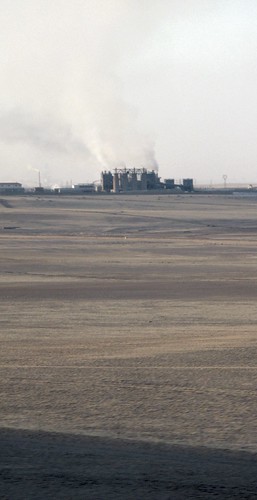
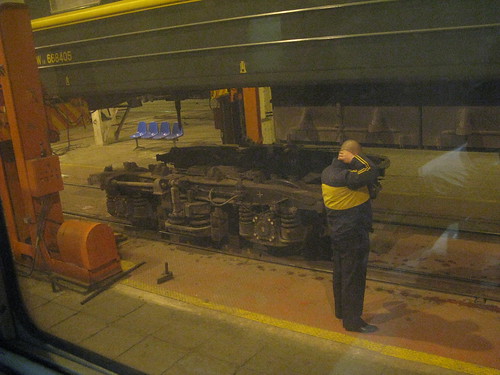
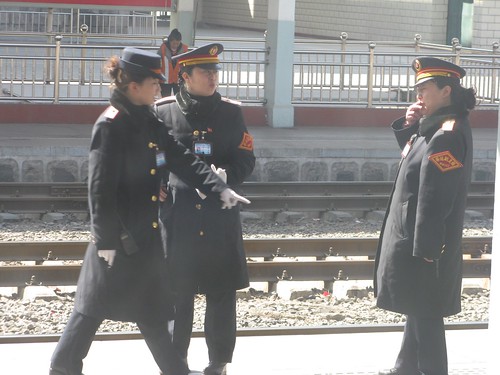

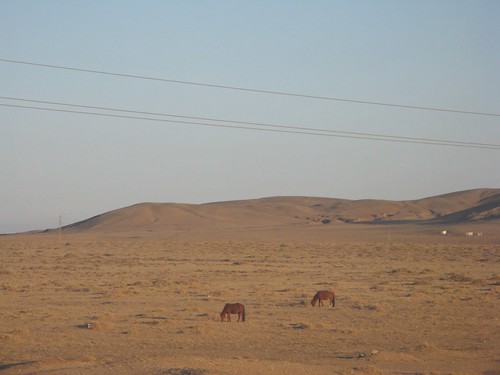
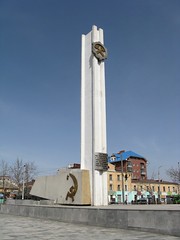


April 5th, 2009 at 11:45 pm
[…] After a couple of days on the train and another couple to come in a ger, every one of which, according to a Mongolian proverb that we now thoroughly understand, has a little bit of the Gobi inside during the springtime, we also came across these two: […]
April 9th, 2009 at 9:41 am
I am so loving the rss feeds of your journey’s. You are an amazing journalist! Great photos, entertaining reads. I really feel like I am with you each step of the way.
My prayers are with you as you wander through such incredible countryside. Intrepid journey’s. You have organised yourselves so well.
I am part of Titirangi Baptist… way back on the other side of the world…
December 13th, 2010 at 1:41 pm
Hi Esther
Sorry to be so late in responding – I have only just come across your enquiry. By now I am sure the information (if I had it) would be too late to be of use. But all ticketting was managed by my daugter-in-law who very efficiently arranged all the plans. You can see her parallel blog at “Pilgrims Progress”